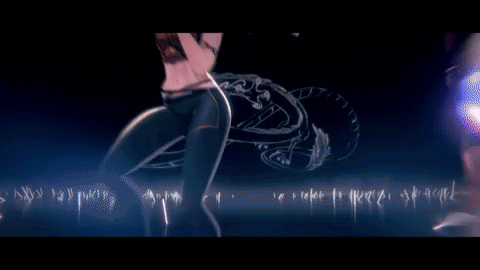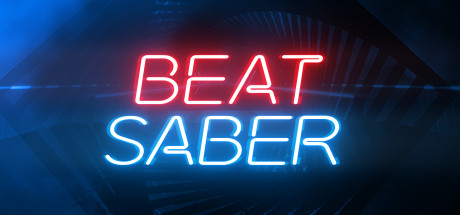Well, unfortunately, this post might only make it worse.
For those unfamiliar, Beat Saber is a virtual reality (VR) rhythm game released in 2019 where the main gameplay involves hitting colored boxes that fly at the player using two correspondingly colored swords. On paper it seems pretty similar to other rhythm games, but the game mechanics–especially in context of the VR medium–as well as the way it handles difficulty makes it hard to put down.

The Design
Beat Saber surprised me last Monday during our difficult games play session. People with (self-proclaimed) poor hand-eye coordination walked up, donned the headset, and struggled a little at first, as advertised. However, only a few seconds later, I watched them immediately get the hang of the game, showing little to no trouble for the rest of the level. Not a single one of them ever failed.
That ease came as the direct result of the medium. VR hijacks players’ everyday experience with moving their arms around in 3D space and makes that the direct controls of the game. Humans have swung around long objects like clubs and swords for millennia, and Beat Saber simply takes advantage of that, making itself instantly accessible to nearly anyone.
As I played more, I came to realize that it felt like I was learning an instrument–a really intuitive instrument. The accessibility of the game and the flowing arm motions dictated by the song/level deisgn combine so that the same way that my brain reads music automatically, without the need for counting lines or spaces, I began to understand the boxes rushing towards me implicitly. Instead of having to process which arm I needed to use and which direction I needed to slash in, I just did it. Once I reached that point, I melded with the music every time, myself a part of the literal song and dance of the game.
The Difficulty
Beat Saber, as many games do, has a number of difficulty options. For each song, players choose between Easy, Normal, Hard, Expert, and Expert+, but the way these change the gameplay feels incredibly rewarding–instead of only adding more or faster boxes to hit, it does things like change the directions you need to hit things, and complicate things so that the left and right hands are doing different things at the same time.

As a simple example, in Normal difficulty K/DA – POP/STARS, there’s a series of motions where you move both arms up and down, but in Hard difficulty, it becomes alternating. The left hand goes up when the right hand goes down, and vice versa–and in Expert difficulty during the final chorus, there’s a horizontal component where you have to swing diagonally in order to hit them fluidly, just as it appears in the POP/STARS music video (a LOT of the motions in the level mimic that!).
The ranking system also plays a huge role in the difficulty and enjoyability of the game–even if you miss no notes, you don’t necessarily get an SS rank in the song, because that score also depends on how well your hits are timed with the song, further promoting a deep connection with the music, always encouraging a more in-tune and immersed relationship with the music, with the game.


Beat Saber is an overwhelming torrent of flashing sensory overload for me, a resident simulation/strategy player more familiar with slower-paced games. The difficulty threw me off at first to the point of questioning if I got a cursed copy, the hand-eye coordination and reflex requirement seemed unreachable while some of my favorite songs are pure nightmares to get through. BFG Division gives me vivid nightmares of how many blocks hiding behind walls and spike bombs that require a swift backhand to reach. As you mention, it remains hard until I start to find the rhythms of each level arrangement and spawn weights, finding minuscule rules and making rushed predictions on the tide of this virtual battlefield, and sure enough, their game becomes more intuitive and seriously weird movements begin to make sense.